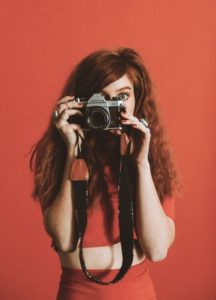One reason everyone fears getting off auto is that there are too many settings to look after and that they won't be set right and the photo will potentially be a disaster…and this can happen when you're not in the habit of:
- Putting your settings back to neutral after using your camera
- Checking your camera the next time you take a shot
Everybody does it every now and then…even pros… yes I did it yesterday and had to reschedule a whole photo shoot for a client…doh!…so I thought it was worth writing about. It’s just bad habits….
So you don’t shoot AUTO any more and that’s great - but now you have to keep an eye on all your settings…especially the ones that you change regularly!! The best habit to have is to set everything back to ‘neutral’ before you put your camera back in the bag…but…we all know that doesn’t always happen.
Common settings that don’t reset themselves and can cause big problems:
ISO, exposure settings, auto focus, EV, metering modes, light meter, file size, shooting modes, self timer.
We all have different styles of photography that we prefer, so your 'neutral' settings may vary to what I have listed here.
- Memory card - check & format
- Battery check + spare
- ISO - 100 or 200
- AV/TV - mid range
- Auto focus (on the lens)- ON
- EV - 0
- Spot Metering - OFF
- Continuous shooting - ON
- Self timer - OFF
- White balance - AUTO
ALSO CHECK…
- Dust on the lens
- Lens clicked in properly on the camera body
There's nothing worse than running out of space on the memory card because you forgot to delete the images after the last download. Sometimes I'll delete the images straight away and every other time I'll format the card which I recommend you doing as well to completely clear all data and reduce the risk of data corruption.
Batteries have a bad habit of dying without warning...sometimes after only two years of use. I always keep my backup batteries in the bag and charged and will never forget to take flat batteries out of my bag at the end of the day for recharging.
The exposure settings - ISO Aperture and shutter speed and EV get set back to their optimal settings keeping the ISO low, the aperture and shutter speed mid range, and the EV back to zero. Personally I have a bad habit of not putting the EV back to zero and it causes me grief every now and then.
The auto focus switch on the lens is another issue I have from time to time as I like using manual focus for certain situations and if I don't switch back to auto, it's quite easy to not notice that it's not focusing when I think it is and for the photo to be just slightly blurry because I wasn't paying attention.
Spot metering is a setting that needs to be used intentionally and if you're camera has spot metering set for day-to-day photography you might wonder why your exposure is suddenly all over the place.
With continuous shooting you can still take one shot at a time but if you suddenly need to take burst and it's set to one shot, the opportunity is often lost...so I keep my camera set to continuous shooting just in case.
If you forget to turn off the self timer from the last time you used it, you're going to have to wait before the shutter comes down and it's either simply annoying, or it could cause you to miss that split-second moment that you wanted to capture.
White balance isn't something that I would usually take off auto but there are some occasions. If you forget to switch it back you'll get some very scary colour casts on the following images that will be difficult to edit out.
One last tip:
Keep your most used lens on the camera. For me ‘the one that got away’ is usually a bird or wildlife that I missed while putting the right lens on the camera...so I keep my 70-200 lens on as standard practice.












